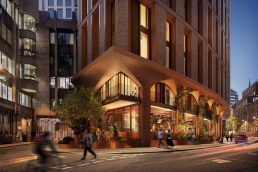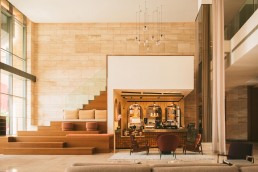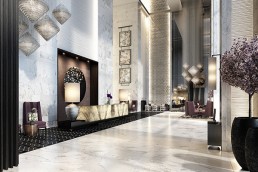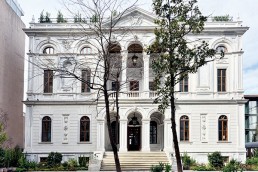Sheppard Robson gets green light for Boundary House hotel
Architecture practice Sheppard Robson has been granted planning permission for Boundary House, a 311-room hotel, community and co-working spaces, and rooftop restaurant at the eastern fringe of London.
The building’s distinctive curved form follows the alignment of the historic Jewry Street, with the base articulated by arched vaults that echo the Victorian railway arches nearby. The main façade has deep set windows with glazed brick reveals. A strong cornice two-thirds up the building negotiates the transition in scale, and, above this, a crown of brick fins taper upwards, with the greenery of the rooftop visible at the very top.
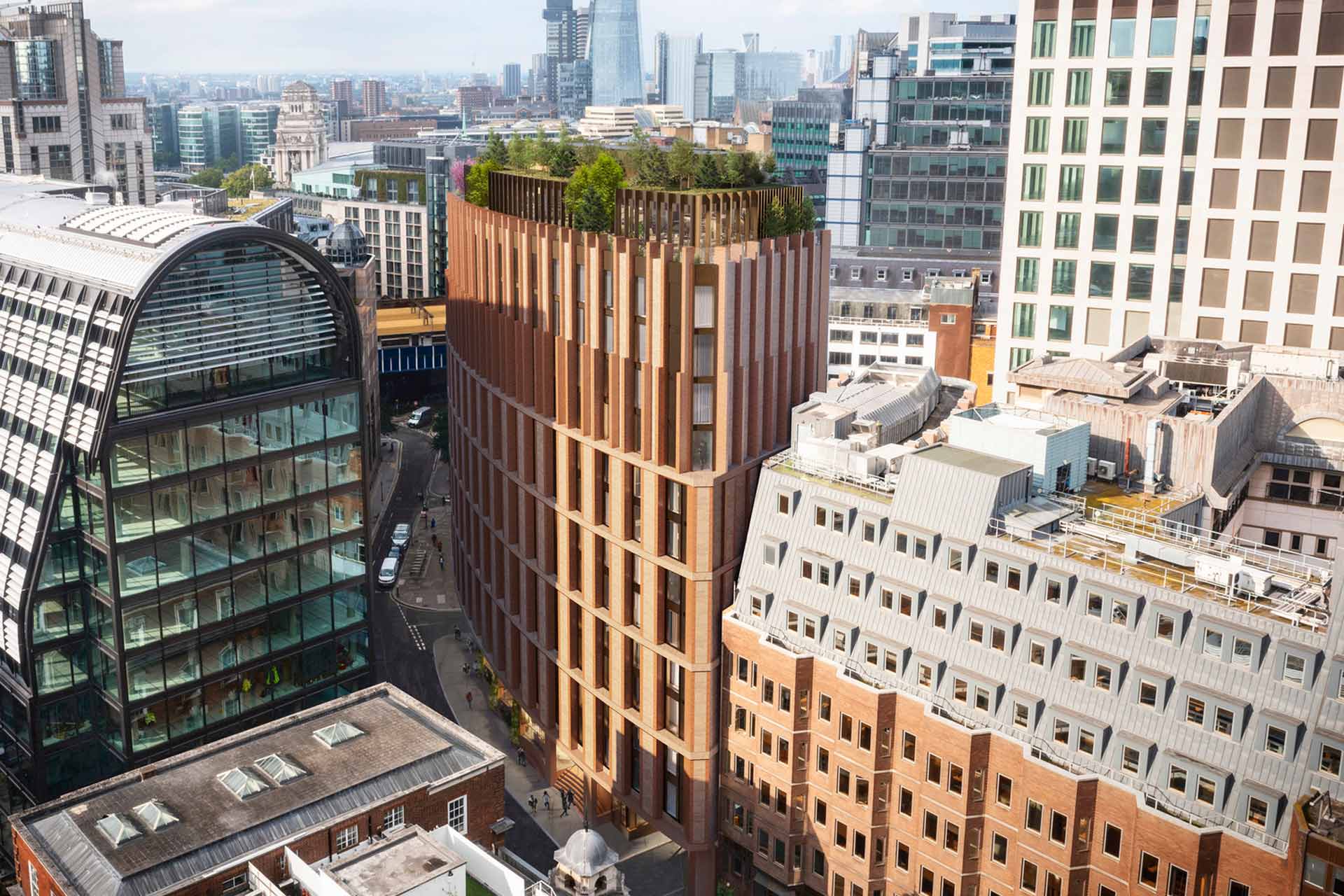
The material palette has been used to situate the building within its surrounding, with accents helping mark the arrival of a major new building for the area. The building’s external form is characterised by a warm palette of red-chestnut tones in matt and glazed bricks, complementing the listed building nearby, whilst the Carlisle Avenue façade uses accents of brighter red glazed bricks as a highlight.
The civic-minded mixed-use development looks to add a new social focus to the area, embodying the aspiration of the ‘Destination City’ vision by taking a constrained infill site and adding a mix of leisure, entertainment, cultural and educational spaces.
This range of uses are brought together on the lower ground floors, which have been created through in-depth consultation with local stakeholders, producers, and education organisations. This social “anchor” for the area moves past the familiar notions of hotel reception, creating flexible spaces and studios available to hotel guests, local organisations and the general public to book.
The spaces open to the community include 456m2 of workspace that are focused on education, skills and training, with the project making several commitments to the community, including hospitality-focused apprenticeship schemes to support the City Fringe Opportunity Area.
As well public seating and greening at street level, the 14th floor rooftop restaurant and bar will be a new local destination nestled within a mini oasis of mature trees on the rooftop overlooking east London. The addition of 45 new trees across the site contributes to the project’s high urban greening factor.
A key component of the sustainability strategy of the BREEAM Excellent building is the retention of the basement and ground structure, meaning 17% of the embodied carbon of the existing structure can be retained. Working with engineers Elliott Wood and Hoare Lea, different options were evaluated, producing a solution that balances elements of reuse with creating a new core and column-free floor plates that allow the building to be easily repurposed for another use in the future.
Rangoon Street, at the southern end of the site, will be transformed from a service access into a new landscaped public realm, with distinctive red glazed theatre seating steps and tree planting drawing people towards the building.
“The project really hinges on its amenity-first approach and how it opens up to the community,” explains Dan Burr, partner at Sheppard Robson. “We wanted guests to feel part of neighbourhood and the neighbourhood to feel part of the building.”
He adds: “The convergence of local and cultural uses at ground floor level, alongside the night-time draw of the rooftop bar, will make the hotel a hive of activity. We think the hotel can become the new beating heart of a reimagined City neighbourhood, with the ground floor being a local “living room” for the area.”
Related Posts
24 November 2021
The House Hotel Jeddah City Yard opens its doors
7 August 2015
Steigenberger announce Dubai hotel
14 April 2015
